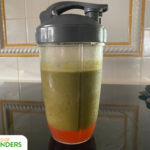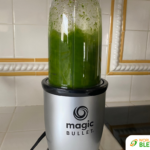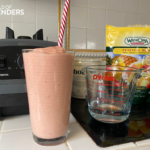This post may contain affiliate links. If you use these links to buy something we may earn a small commission. Thanks.
There’s nothing worse than pouring a smoothie into your glass and half of it ends up being foam.
If your smoothie is foamy, we’re here to help.
Drinking the foam won’t do you any harm, but most people don’t like the taste, appearance or mouthfeel of a foamy smoothie.
I’ll explain what causes smoothie foam, how to fix a foamy smoothie, and what you need to do to make smoothies without any foam.
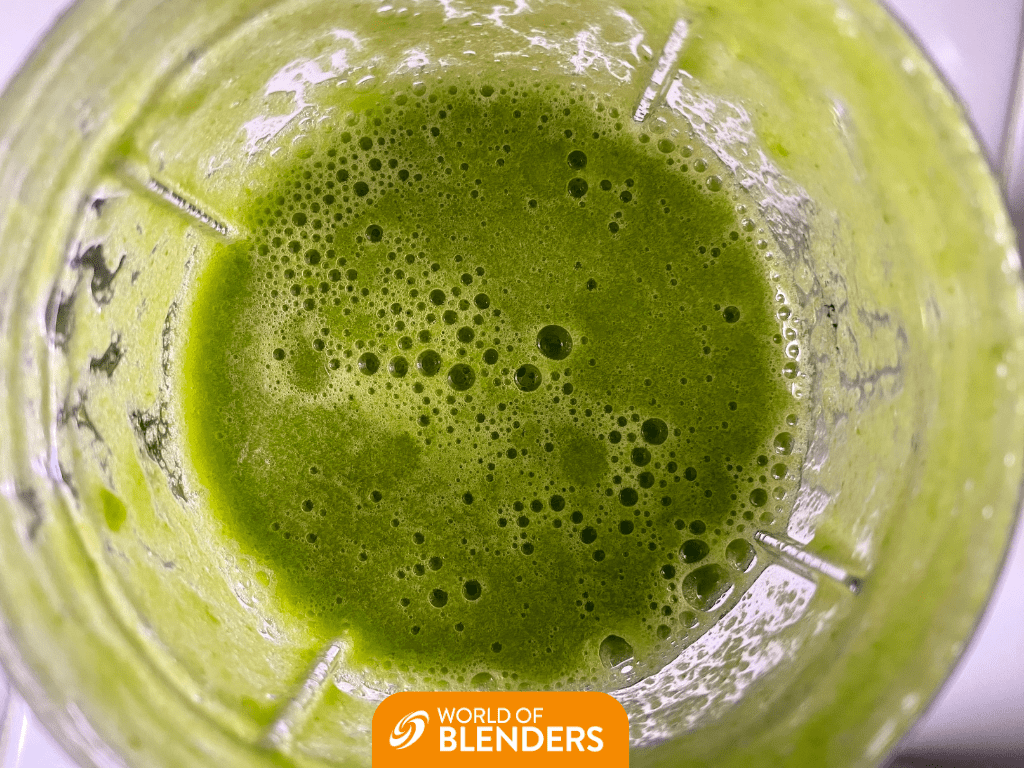
4 Reasons Why Your Smoothie is Foamy
If your smoothie is foamy then you can be sure that one of these four mistakes is the cause of your problem!
1. Too Many Insoluble Fibers
Unlike soluble fiber, which dissolves in water, insoluble fiber does not dissolve and is tough to break down. In fact, insoluble fiber is so tough that even powerful blenders may struggle to blend it properly. The unblended fiber then appears as a visible foam on the surface of your smoothie.
If you’re making high fiber smoothies, this could be more of a problem!
Avoid leafy greens and fruits like strawberries, kiwis, and grapes.
Unfortunately, some of the healthiest smoothies, like our kale smoothie recipes or spinach smoothies have lots of fiber so this is a common problem.
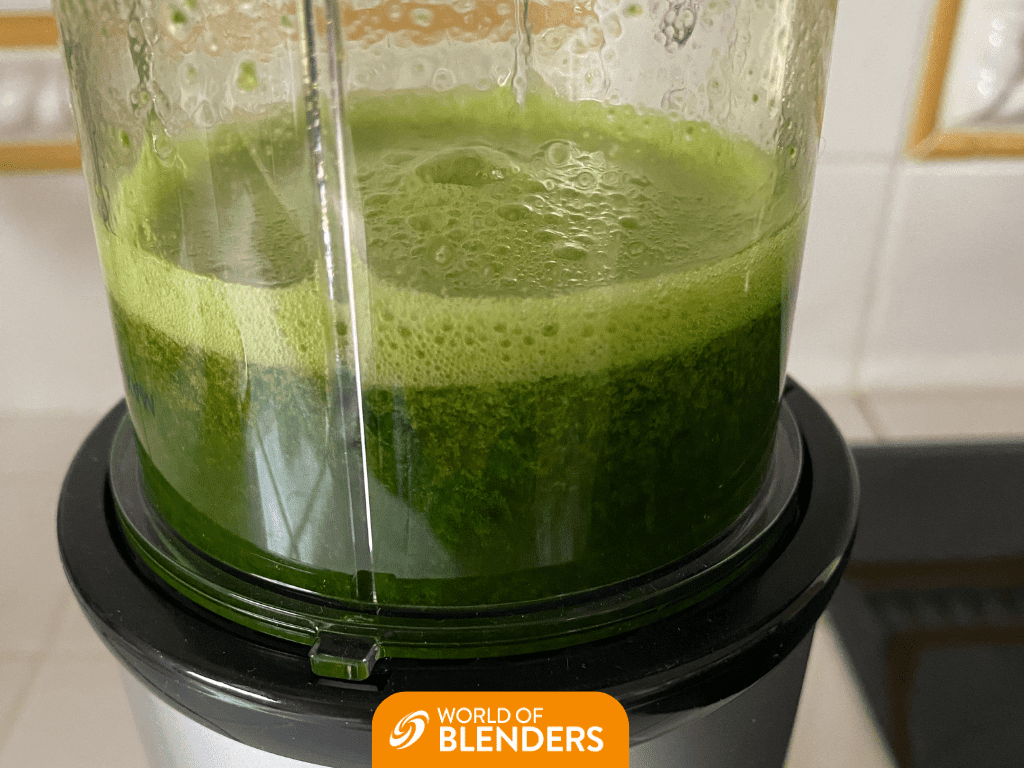
2. Over-blending
When you blend a smoothie, air is pulled in to the mixture. This air can combine with ingredients in the smoothie – particularly the insoluble fibers – and create a layer of foam.
Blending for too long can therefore be a cause of a foamy smoothie, as over-blending will pull in more air, and the more air you pull in, the more likely you are to create a foamy layer on the smoothie’s surface.
KEY: Avoid blending for too long! Once your smoothie is done blending, make sure to stop!
3. Too Much Liquid
Smoothies are a mixture of liquids and solid ingredients, and the ratio of of liquid to solid ingredients can have a big impact on how foamy your smoothie becomes.
When a smoothie contains lots of liquid, air will become trapped in the liquid causing bubbles and, eventually, foam. The more liquid your smoothie contains, the more room there is for air to enter the smoothie and cause it to foam up.
Certain liquid bases for smoothies are better than others!
Making a smoothie with water instead of milk can also cause your smoothie to get foamy!
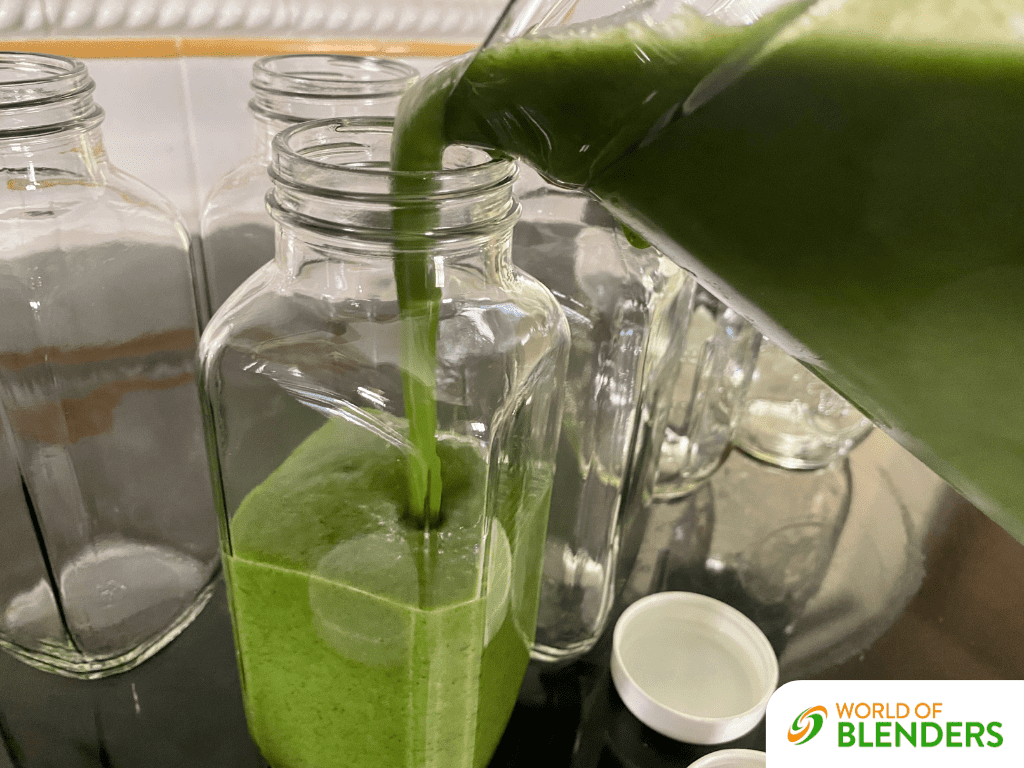
4. Adding Ingredients in the Wrong Order
The order that you add ingredients to your blender can make a big difference to the amount of foam that is produced!
If the heavy, more difficult to blend ingredients are at the top of the blender then there will be less room for air to enter the mixture. And less air means less foam.
In contrast, if the top of the blender is made up of light, easy to blend ingredients, or liquids, then the top ingredients will blend quickly and allow greater aeration, which produces foam.
KEY: Load your lighter ingredients in first and put your most dense fruit at the top of your container!
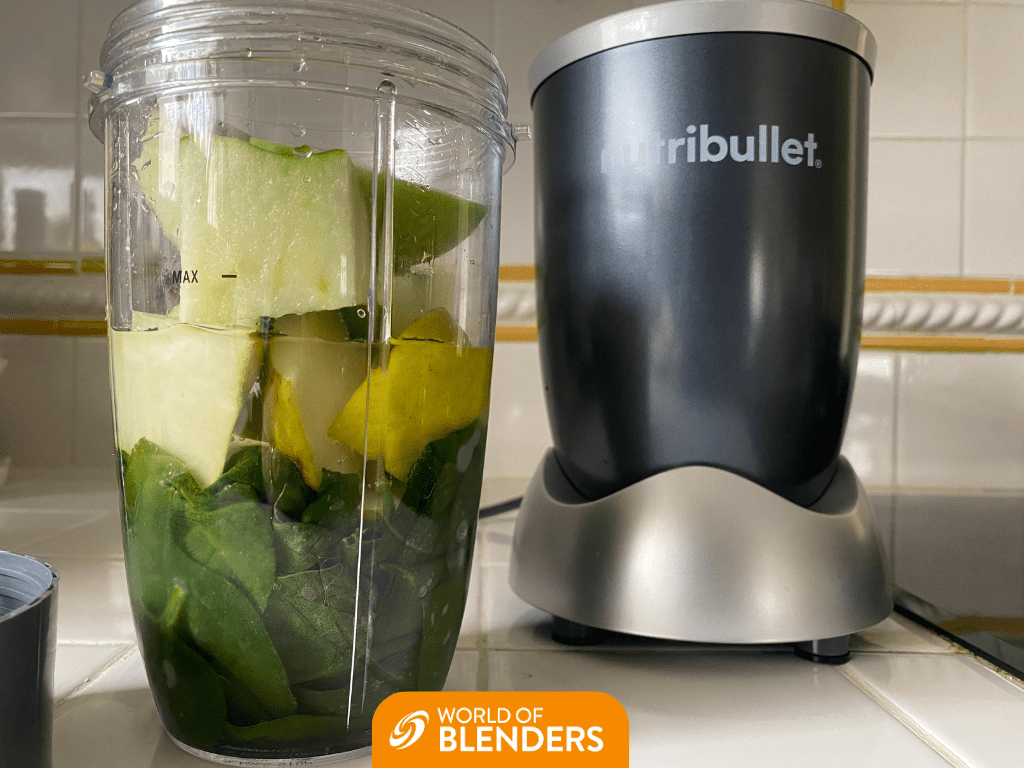
How to Fix a Foamy Smoothie
If you’re reading this having just made a smoothie with an unappetizing later of foam on top then don’t worry: It’s not too late to rescue your smoothie!
A common mistake people make when trying to fix a foamy smoothie is continuing to blend the smoothie on a high setting. This won’t fix the problem, and may actually make it worse. You can freeze smoothies, but if it’s too foamy then it won’t freeze well.
You need to gently blend the foam into the rest of the smoothie. To do this, try turning your blender down to its lowest setting and blending the smoothie for no more than 20 seconds. If your blender doesn’t have a slow setting then blending in very short pulses may also work.
If your smoothie contains a lot of liquid then adding a thickening ingredient may also help. Add one of the following ingredients into your mixture, then blend on a slow setting:
- Greek yogurt
- Protein powder
- Nut butter
- Banana
- Frozen berries
- Gluten-free flours like coconut flour, flax flour, or gram flour
- Tofu
- Chia seeds
- Cottage cheese
Normally blending doesn’t destroy fiber in your smoothies, but if you scoop the foam off the top of the smoothie it may remove healthy ingredients such as insoluble fibers.
5 Ways to Stop Your Smoothies Being Foamy
Now that you understand why your smoothie has a layer of foam on top, it’s time to learn how to stop foam from forming. Just follow these five simple rules, and take particular care when blending leafy greens and fruits that are known to cause smoothie foam.
1. Pulse blending
When you leave your blender running for a long period of time, the continuous movement on the surface of the smoothie allows air to be absorbed into the mixture. This trapped air is what causes bubbles and foam to develop.
To avoid this, use the pulse button on your blender, where you blend your smoothie in short, fast bursts. This will result in less air entering the mixture, which will mean less foam on your smoothie.
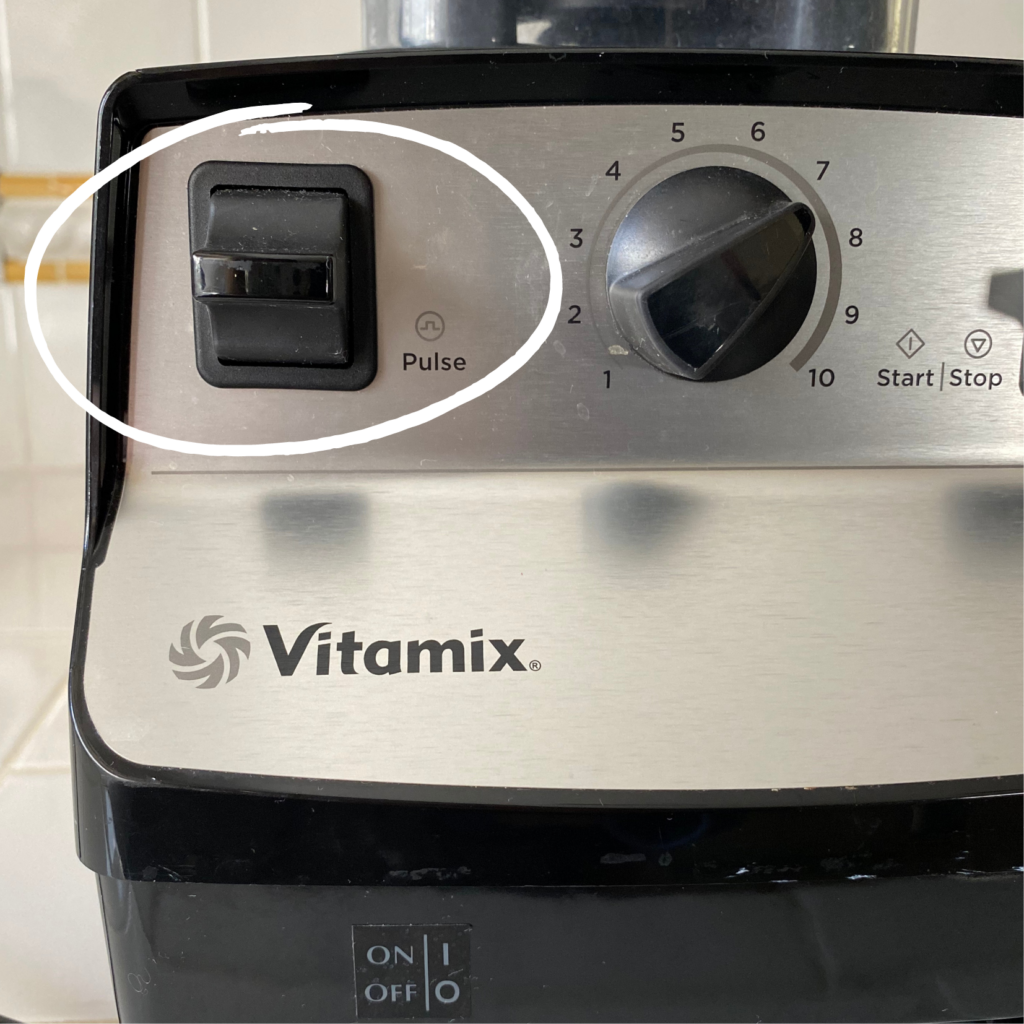
2. Finish on a slower setting
Using your blenders slowest setting for the last ten or twenty seconds of blending can really help to reduce smoothie foam.
Even when you have to blend your smoothie on a high setting in order to blend hard ingredients, you can still switch to a slow setting at the end before pouring your smoothie.
Finishing blending on a slower setting will not only reduce the amount of foam that forms, it will also blend any foam that has already formed back into the mixture.
3. Peel fruits and vegetables
Insoluble fibers are a major cause of smoothie foam. These fibers are found in a variety of fruit and vegetables, with the highest concentrations located in the skin. You can therefore reduce the amount of insoluble fiber in your smoothie by peeling your fruit and vegetables before blending them.
Check out our list of the best vegetables for smoothies if you need some ideas!
This will mean that you miss out on some fiber, but on the plus side, it will significantly reduce smoothie foam too.
If you use too much citrus it may also cause your smoothie to separate.
4. Make your smoothie thicker
Thick smoothies don’t have as much space where air can get trapped or as much thin liquid where air can easily form bubbles. Making your smoothie thicker is therefore a great way to reduce aeration and, in turn, reduce the amount of foam that forms on the smoothie’s surface.
You can also use our list of ways to make your smoothie creamier!
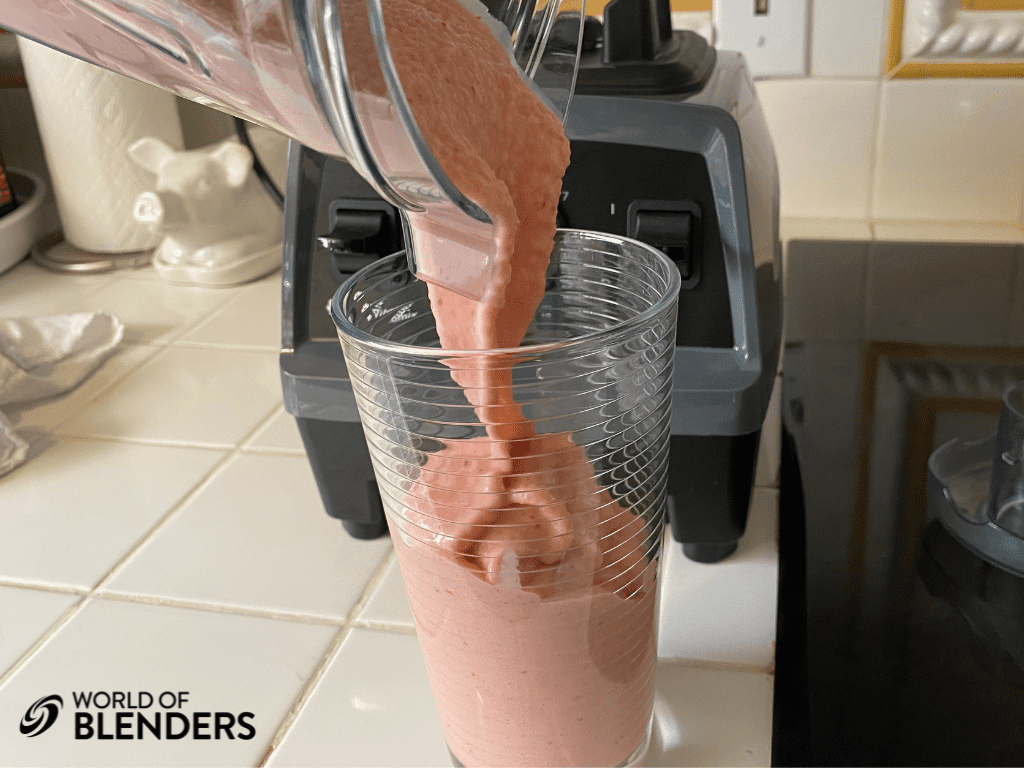
5. Add ingredients by weight
When placing your smoothie ingredients into the blender cup, start with liquid first and then add the ingredients by weight from lightest to heaviest. For example, spinach leaves would go at the bottom, while frozen fruits and nuts should be nearer the top.
This tactic will help you achieve a smoother smoothie consistency faster, and with less aeration, which makes foaming much less likely.
If you follow these 5 tips it will help keep your smoothies from getting foamy! This list will also help your smoothies last longer in the fridge!
